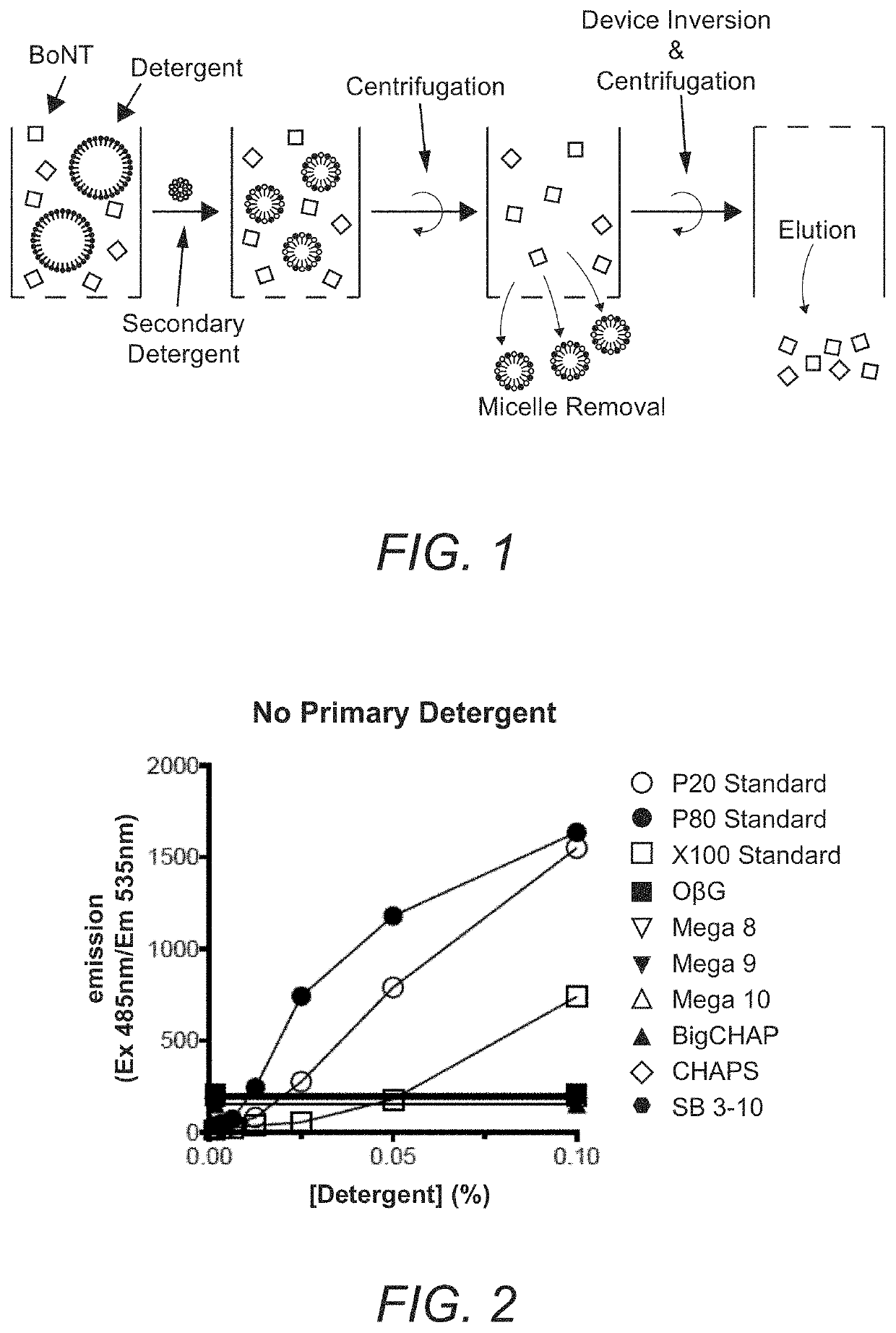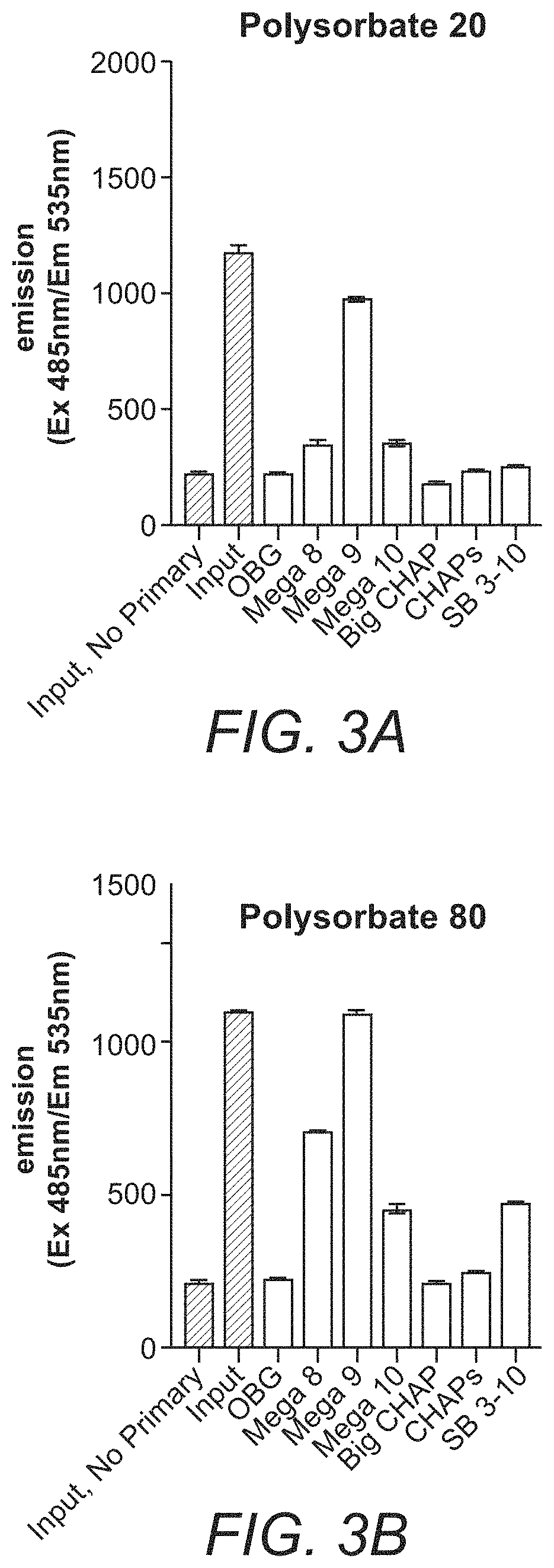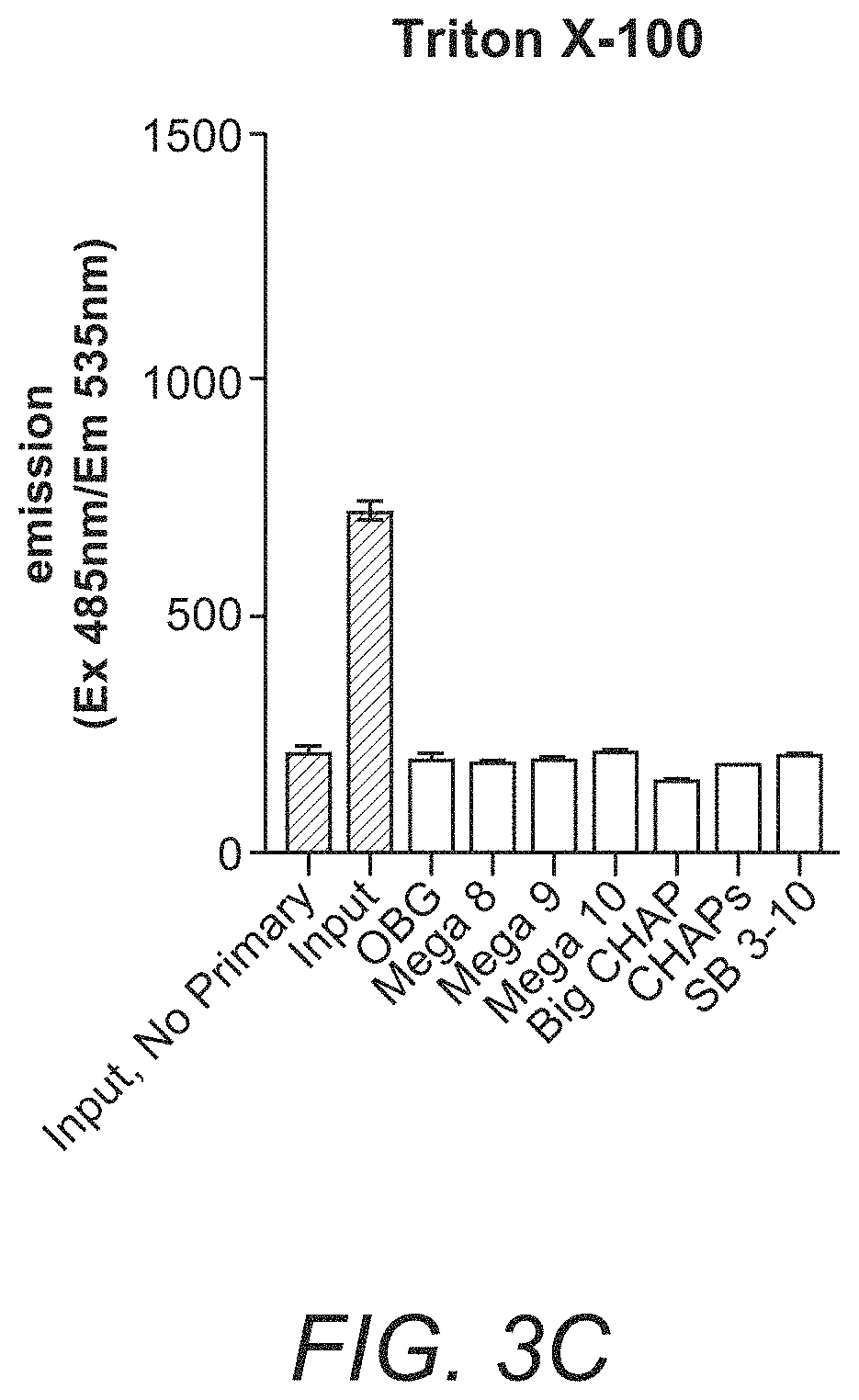Compositions and methods for removal of detergents from aqueous solutions
a technology of detergents and surfactants, applied in the field of detergent or surfactant removal, can solve the problems of many detergents and surfactants, interfere with analytical methods used for characterization and/or quality control of such solutions, and detergents and surfactants can be difficult to remov
- Summary
- Abstract
- Description
- Claims
- Application Information
AI Technical Summary
Benefits of technology
Problems solved by technology
Method used
Image
Examples
Embodiment Construction
lass="d_n">[0024]The inventive subject matter provides compositions and methods in which a primary detergent or surfactant (such as a detergent or surfactant added as an excipient in a protein or peptide solution) is at least partially removed by direct addition of a secondary detergent or surfactant in concentrations that exceed the critical micellar concentration (CMC) of the secondary detergent or surfactant. Secondary detergents or surfactants can be selected to form micelles with low molecular weight (e.g. less than about 500 kD, 200 kD, 150 kD, or 100 kD) and / or small hydrodynamic radius (e.g. a hydrodynamic radius smaller than that of a protein of interest). In preferred embodiments the secondary detergent of surfactant has a CMC of about 3.5 mM to about 40 mM, and / or forms micelles having a mean molecular weight ranging from about 8 kD to about 40 kD. Typical primary detergents / surfactants include, but are not limited to, polysorbate 20, polysorbate 80, and Triton X-100. Sui...
PUM
| Property | Measurement | Unit |
|---|---|---|
| volume | aaaaa | aaaaa |
| volume | aaaaa | aaaaa |
| volume | aaaaa | aaaaa |
Abstract
Description
Claims
Application Information
 Login to View More
Login to View More - R&D
- Intellectual Property
- Life Sciences
- Materials
- Tech Scout
- Unparalleled Data Quality
- Higher Quality Content
- 60% Fewer Hallucinations
Browse by: Latest US Patents, China's latest patents, Technical Efficacy Thesaurus, Application Domain, Technology Topic, Popular Technical Reports.
© 2025 PatSnap. All rights reserved.Legal|Privacy policy|Modern Slavery Act Transparency Statement|Sitemap|About US| Contact US: help@patsnap.com



